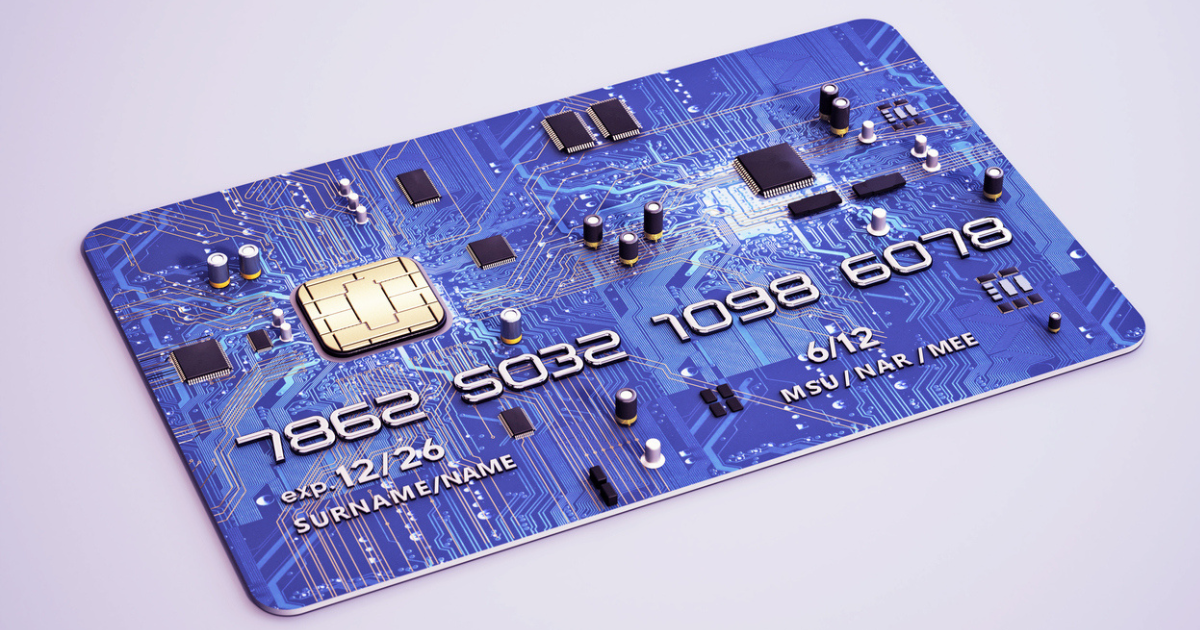
| November 23rd, 2023 |
The Evolution of Credit Card Chip Technology!
Introduction — Unearthing the Genesis of Credit Card Chips:
In the not-so-distant past, plastic money revolutionized the way we conducted transactions. Enter the era of credit cards, a boon for convenience but a playground for potential fraud. This predicament paved the way for the advent of credit card chip technology, a small yet mighty innovation that has drastically transformed the landscape of financial security.
Chapter 1 — The Humble Beginnings:
Our journey began in the late 1960s when the magnetic stripe reigned supreme. The humble magnetic stripe, a black band on the back of credit cards, stored user data magnetically. However, its susceptibility to skimming and counterfeiting propelled the need for a more secure alternative. In retrospect, the humble beginnings of credit card technology set the stage for an ongoing saga of innovation, security, and adaptability. The magnetic stripe, while a symbol of transition, ultimately paved the way for a more robust and dynamic evolution in the form of credit card chips, marking a pivotal moment in the history of financial transactions.
Chapter 2 — Rise of the Chips – A Technological Renaissance:
In the 1990s, the first inklings of credit card chips emerged. Smart cards, equipped with integrated circuits, promised enhanced security. The chip, a minuscule powerhouse, replaced the vulnerable magnetic stripe, ushering in a new era of financial transactions. The technology evolved, and by the early 2000s, the Europay, Mastercard, and Visa (EMV) standards became the gold standard for chip-based transactions.
Chapter 3 — The EMV Revolution:
EMV technology introduced a dynamic authentication process. Unlike static magnetic stripes, EMV chips generated unique codes for each transaction, rendering stolen data practically useless. This shift significantly reduced instances of card-present fraud, marking a pivotal moment in the fight against cybercrime. The EMV revolution stands as a testament to the industry’s commitment to adaptability and security. The dynamic authentication process introduced by EMV chips not only thwarted fraud but also laid the groundwork for the next phases of innovation in credit card technology. The journey from magnetic stripes to EMV chips showcased the industry’s resilience and its unwavering dedication to providing consumers with a secure and seamless payment experience.
Chapter 4 — Contactless Convenience:
Fast forward to the present day, and we witness the integration of contactless technology into credit card chips. The tap-and-go phenomenon has taken the world by storm, offering a seamless and swift payment experience. Near Field Communication (NFC) technology enables users to make secure transactions with a simple tap, adding a layer of convenience to the already secure EMV framework. The integration of contactless technology into credit card chips represents more than just a technological leap—it embodies a paradigm shift in how we perceive and execute financial transactions. The tap-and-go phenomenon not only streamlines our interactions with payment systems but also sets the stage for a future where security and convenience are seamlessly woven into the fabric of our daily lives. The journey from EMV security to contactless convenience underscores the industry’s dedication to crafting a payment experience that is both sophisticated and user-friendly.
Chapter 5 — Future Horizons – The Next Chapter in Security:
As technology continues its relentless march forward, what lies ahead for credit card chip technology? Biometric authentication, artificial intelligence, and blockchain are emerging as potential game-changers. Imagine a credit card that not only recognizes your fingerprint but also employs machine learning algorithms to detect anomalies in your spending patterns, alerting you to potential fraud in real-time.
Biometric Authentication:
Imagine a credit card that becomes an extension of your identity. Biometric authentication, such as fingerprint recognition, is poised to become a cornerstone in the evolution of credit card security. Your unique biological markers serve as an impenetrable key, ensuring that only you can unlock the potential of your card. This not only adds an extra layer of security but also eliminates the need for passwords or PINs, simplifying the user experience.
Artificial Intelligence:
The integration of artificial intelligence into credit card chip technology takes fraud prevention to unprecedented levels. Picture a credit card equipped with machine learning algorithms that analyze your spending patterns in real-time. AI can detect anomalies, irregularities, or suspicious activities, immediately triggering alerts or even proactively blocking transactions that deviate from your typical behavior. This adaptive intelligence creates a personalized defense system, constantly learning and evolving to stay one step ahead of potential threats.
Blockchain:
Enter the realm of blockchain, the decentralized and tamper-resistant ledger technology. In the future, credit card chip systems leveraging blockchain could offer unparalleled security and transparency. Each transaction would be securely recorded in a distributed network, making it virtually impossible for malicious actors to alter or manipulate transaction data. This not only ensures the integrity of your financial history but also adds a robust layer of protection against various forms of cyber threats.
Conclusion — Secure, Swift, and Ever-Advancing:
The evolution of credit card chip technology is a testament to the relentless pursuit of secure and efficient financial transactions. From the magnetic stripe’s vulnerability to the robust security features of EMV chips, the journey has been transformative. As we embrace the era of contactless payments, the future promises even more innovation, ensuring that our transactions remain not only convenient but, above all, secure.
Final Thoughts — Navigating the Chip-Embedded Future:
In the ever-evolving world of finance, credit card chip technology stands as a stalwart guardian of our financial security. As we look ahead, the fusion of cutting-edge technologies is set to redefine the landscape once more, promising a future where our transactions are not only seamless but also impenetrably secure.
